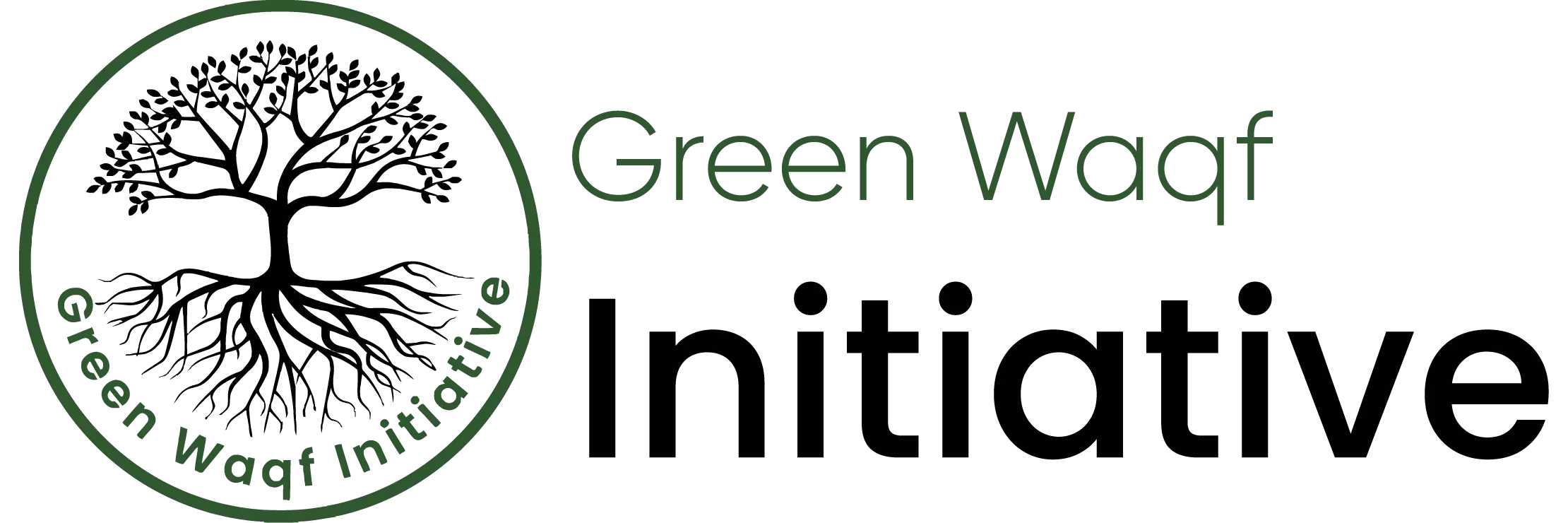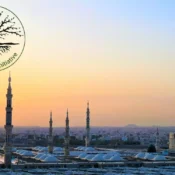
Indonesia Environmental Profile
These environmental profiles were produced as part of the Green Waqf Initiative by the
Islamic Chamber of Commerce, Industry and Agriculture (ICCIA). ICCIA believes that
the Islamic concept of Waqf can be used as a social financing mechanism to combat
climate change. Through Waqf, the land is decommodified; therefore, it can be used
only for specific purposes defined by the owner. These purposes can include
reforestation, land revitalization and research centers, among others.
This environmental profile has been developed to assess the ecological situation in
Indonesia and is part of a series that covers all ICCIA member countries. These profiles
are meant to be used as a source to assist in policy dialogue, stakeholder engagement,
and strategic planning and to help educate and raise awareness about the social,
cultural and economic risks associated with climate change. The profiles provide
relevant information on pertinent public and private sector policies and programs and
the country's adaptation priorities and potentials.
Indonesia Environment Profile Team
Author: Fatima Faisal
Editor: Safia Hussain
Table of Contents
- Indonesia Environment Profile
- Indonesia Environment Profile Team
- Section 1: Country Overview
- General Overview of Indonesia
- Climate Change Risks
- Indonesia’s Commitment towards Climate Change
- Paris Agreement, 2016
- Medium-Term National Development Plan 2015–2019
- Climate Governance: Carbon Taxes and Beyond
- Low carbon development projects
- 2030 climate targets
- Section 2: Sector-wise climate change causes and effects
- Agriculture
- Tourism
- Conclusion & Recommendation
About ICCIA
The Islamic Chamber of Commerce, Industry, and Agriculture, an institution affiliated with the
Organization of Islamic Corporation (OIC), aims to strengthen collaboration in the fields of trade,
commerce, information technology, banking, insurance, shipping, joint venture, and many others
within member countries.
ICCIA is the sole representative of the private sector in 57 Islamic member countries and primarily
focuses on creating a knowledge platform for the private sector of the Muslim countries to connect
and learn. It provides visibility to the star performers for future growth and access to new markets.
Additionally, it lays out policy recommendations to enable a private-sector-friendly business
environment in policies, processes, paperwork, and payment system integration, to name a few.
Finally, ICCIA plays an integral role in promoting member country products and increasing access
between home and foreign markets.
About the Environmental Profile
Several experts claim that insufficient climate control policies have become a 'very serious' concern
and have been significantly harming a considerable proportion of the world's population.1 Some top
reasons behind climate change include heat-trapping greenhouse gasses, deforestation, use of heavy
machinery, powering buildings, and cutting down on farming livestock.
ICCIA's recent initiative focuses on promoting environmentally friendly and sustainable practices in
member countries to enhance societal impact, minimize waste, and improve living standards.
Indonesia is extremely vulnerable to climate change especially because of prevalent events including
floods and droughts, and the concerning effects of sea level rise, increasing temperatures, and shifts
in rainfall patterns.
Section 1: Country Overview
General Overview of Indonesia
Indonesia, world’s fourth most populous country, third largest democracy, and the largest
archipelagic site, consists of 17,508 islands and almost 270 million people.2 The five main islands
include Sumatra, Java, Kalimantan, Sulawesi and Papua. The four archipelagos are Riau, Bangka
Belitung, Nusa Tenggara, and Maluku. Of the 34 provinces, the largest is Papua covering an area of
approximately 319,036.05 sq km and the smallest is Daerah Khusus Ibukota covering an area of
approximately 664.01 sq km.3
Indonesia is ASEAN’s largest economy. Its GDP increased by more over 6% in 2019 to IDR
15,833.9 trillion from IDR 14,838.3 trillion in 2017.4 The Indonesian government has been making
progress since 2014 with its aspirations to turn Indonesia into a manufacturing hub for Southeast
Asia.
Although slowly and gradually, Waqf is becoming an integral part of Indonesia’s property ownership.
Ministry of religious affairs state that the total number of waqf lands reaches 52,000 hectares spread
across 391,909 locations throughout Indonesia.5 As one of the religious institutions that is intimately
tied to the socioeconomic circumstances, Waqf has made significant contributions to Indonesia's
overall development, particularly in the areas of social and human resource development. Several
rules and regulations must be followed for Waqf’s implementation in Indonesia. Law No 41 of 2004
on Waqf states that ‘Waqf is valid if implemented according to sharia.6 The promised waqf cannot be
canceled. Waqf aims to utilize waqf property according to its function. Waqf serves to realize the
economic potential and benefits of waqf property for the benefit of worship and to promote public
welfare.’
Despite of having the largest Muslim population in the world, the potential utilization of waqf funds
in Indonesia is still low. Because regulation serves as the foundation or legal basis for the
administration of waqf, the priority of regulatory issues is less favorable.
Climate Change Risks
In terms of climate risk, Indonesia ranks in the top three countries, with extreme vulnerability to all
types of flooding and extreme heat. The severity of these hazards is expected to increase as the
climate changes. Without effective adaptation, population exposure will rise. For example, the population exposed to a major river flood could increase by 1.4 million between 2035 and 2044.7
Particularly vulnerable to sea-level rise, Indonesia ranks fifth in the world with respect to population
living in lower elevation coastal zones. Reports show that the national population likely to be exposed
to permanent flooding by 2070-2100 could exceed 4.2 million people.8
In Indonesia, climate zone classifications are derived from a unique Köppen-Geiger climate
classification system. This particular system segregates climate into five different groups including
A (tropical), B (dry), C (temperate), D (continental), and E (polar).
Here is a visual of the Köppen-Geiger Climate Classification in Indonesia from 1991 – 2020.9

The following graph shows the monthly climatology of Mean Temperature and precipitation in
Indonesia from 1991 – 2020.10

The following graph shows the predicted mean annual temperature in Indonesia in 2070.11

Indonesia’s Commitment towards Climate Change
Paris Agreement, 2016
As part of the Paris agreement in 2016, Indonesia committed to reducing emissions by a total of 29%
without any conditions and up to 41% with certain international assistance by 2030.12 By establishing
these objectives, Indonesia intends to achieve archipelagic climate resilience through comprehensive
adaptation and mitigation programs as well as disaster risk reduction strategies.
Medium-Term National Development Plan 2015–2019
Constituting the basis for all ministries and government agencies for formulating their respective
Strategic Plans, the medium-term national development plan is the third phase of implementation of
Indonesia's national long-term plan. The government has also included greenhouse gas emission
reductions in the Medium-Term National Development Plan 2015-2019 ('RPJMN' in Indonesian).
They intended to cut emissions by 26% by 2020. President Joko Widodo's second term raised the goal
to 27.3% by 2024.13
Indonesia has taken several measures to achieve the RPJMN target, such as establishing climate
change funding. These funding are primarily managed by different ministries, including the Ministry
of Finance, the Ministry of National Development Planning/National Development Planning Agency,
and the Ministry of Environment and Forestry (INDEF).
Climate Governance: Carbon Taxes and Beyond
The CAT Climate Governance series aims to develop a practical framework for assessing a
government's preparedness - both institutionally and in terms of governance - to ratchet up climate
policy and implement adequate transformational policies on the ground, in order to enable the
required economy-wide transformation towards a zero-emissions society.
Indonesia has a compounded governance structure that sends contradictory signals regarding the
transition to net zero emissions. Positive signals, particularly in the last year, show progress in
establishing a climate governance structure and creating an enabling environment to support sectoral
transitions to net zero emissions.14 Nonetheless, the overall assessment of Indonesia's governance
structure falls short, as evidenced by the fact that the country ranks red in the majority of governance
categories and indicators.
The HPP Law establishes a framework for the implementation of a carbon tax, the scope of which
includes carbon emissions that have a negative impact on the environment. Naturally, the scope will
be gradually refined in accordance with the roadmap, which will take into account carbon emission
reduction strategies, priority sector targets, alignment with new and renewable energy development,
and alignment with various other policies.
Low Carbon Development Projects
Government agencies have also used distinctive tracking systems to plan, monitor, and verify their
low carbon development (LCD) projects. According to one study conducted by the SMERU Research
Institute in partnership with the Ministry of National Development Planning/National Development
Planning Agency and INDEF, there were 16,189 climate actions in December 2019 that collectively
reduced around 23.46 percent of emissions.15
Since then, the COVID-19 pandemic has posed a significant challenge for Indonesia. Government
agencies are now focusing their program on both controlling the virus's spread and managing the
country's economic recovery. Climate change policies were not included in this national strategy,
despite the fact that they have the potential to support economic recovery.
2030 Climate Targets
On July 2021, the government of Indonesia submitted an altered and updated national climate
commitment to the UN. The plan includes new adaptation and resilience measures, as well as some
new targets in specific sectors, but it retains the same topline emissions targets as in 2016: an
unconditional target to reduce greenhouse gas (GHG) emissions 29% below business-as-usual by
2030, or a 41% reduction target conditional on sufficient international financial support. Indonesia
furthermore submitted its first long-term strategy to the UNFCCC, indicating that the country intends
to peak GHG emissions in 2030 and could achieve net-zero GHG emissions by 2060 or sooner.16
Section 2: Sector-wise climate change causes and effects
Agriculture
The agriculture industry of Indonesia is by far the most severely affected sector. The climate change
impact on agriculture is multifaceted, ranging from resources, agricultural infrastructure, and
agricultural production systems to food security and independence, as well as farmer and community
welfare. The main priority in addressing climate change impacts on agriculture is an adaptation action
program in the food crops and horticulture sectors in order to increase production and maintain
national food security. Adaptive activities in dealing with climate change that are coordinated with
mitigation activities include the use of high-yielding rice varieties, the use of animal manure as an
energy source via biogas installations, and the use of organic fertilizer for carbon sequestration.
The following graph shows potential impacts of climate change on agriculture in 72 tropical coastal
communities including Indonesia.17

Tourism
In Indonesia, a one percent increase in temperature and relative humidity is associated with a 1.37
percent and 0.59 percent decrease in international tourist arrivals.18 With an annual value of more
than $15 million, Indonesia has the world's second largest manta ray tourism industry.19 While coral bleaching events and ocean acidification are well-documented climate change effects, there are
additional stressors on coral reefs that could undermine these valuable tourism industries.
Sea level rise causes coastal erosion, and stronger and more frequent storms, which are typical of the
current climate, suffocate and destroy coral reef structures. Heavy rains wash pollutants and nutrients
from the land into the ocean, resulting in algal blooms and a decrease in available light at reefs.
Changing ocean currents have an impact on reefs by altering the connectivity of geographically
distant reefs and the temperature profiles of the water. These changes can result in a lack of food
sources and disrupt the ability of reef species to reproduce.
If left unchecked, these complex effects could significantly diminish the value of marine tourism by
deteriorating the quality of world-class Indonesian dive sites and idyllic tourism destinations.
Conclusions & Recommendations
Climate change is receiving considerable attention in Indonesia because the country is the world's
third largest emitter of greenhouse gases; the root causes of current global climate change. While
Indonesia is endowed with abundant natural resources, environmental degradation is accelerating, and
unlike in most industrialized countries, Indonesia's greenhouse gas emissions are primarily the result
of forest fires and environmental degradation. As a country that is extremely prone to climate change,
Indonesia must adapt to various environmental pressures.
It is imperative that Indonesia adapts appropriate climate change policies and works towards reducing
greenhouse emissions to improve its economic circumstances as well as boost productivity. It is
crucial to remember that while existing policies in the land-use and energy sectors are estimated to
reduce emissions by 547 MtCO2, strengthened policies would reduce total emissions to
approximately 1,733 MtCO2.20
Early actions to encourage clean energy sources and implement energy efficiency measures will
reduce the cost of achieving further emissions reductions in the long run. Delaying these actions may
result in infrastructure developments that lock in emissions-intensive pathways that are costly or
impossible to change in time to limit warming



